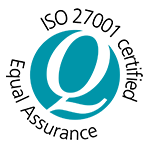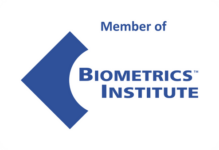Electronic Identity Verification (eIDV) solutions utilise computerised systems to remotely verify the identity of an individual against their own identity documents. These solutions are currently operated by large corporate institutions and typically enable users to remotely authenticate themselves by extracting information, such as photographs, name, date of birth, address and ID numbers from a driver’s license, passport, or birth certificate. The extracted information is then matched to a database of verifying information and/or a ‘real-time’ portrait-style image of the user. As an automated process in which a Pass/Fail outcome is provided, eIDV solutions are often susceptible to both False Accepts and False rejects for the identity document submitted by the user and the submitted biometrics.

Hence, in instances where the match score of a given transaction is close to the pre-determined threshold, there is an inherent need for manual resolution by a manual resolution expert. Similarities can be drawn between this necessity and the current philosophies that underpin automated document examination within the context of Forensic Science.
Forensic Document Examination (FDE) is a forensic discipline concerned with the assessment of documentation (a written, printed, or electronic) that has been disputed within the context of the legal system. Like many other forensic scientific disciplines, FDE aims to evaluate the unique characteristics of potential evidence in a scientific approach to determine the individualising features that may associate that evidence with a known source.
In questioned document examinations, the standard workflow of examination involves the comparison of a questioned sample (where the origin of the sample is unknown) to a known sample (where the origin of the sample is known). These standard procedures are predominately conducted by an expert through manually intensive processes that have been validated and published in ASTM International standards. However, it should be noted that there is an inherent need for these processes to be as systematic and objective as possible to further understand, validate and improve them. Arguably, this is currently not the case. These standard procedures are subject to a range of influential bias, and often examinations require the subjective opinion of an FDE expert to provide a decision on the outcome of their analysis. This dilemma is where the development of modern computational tools can assist examiners by providing the ability to quantify the strength of evidence through quantitative means.

Automated Document Examination (ADE) is primarily concerned with the handwriting, signature and authenticity components of questioned document analysis and serves to provide a scientific and statistical basis for such evidence. As an adaptation of the accepted methodology currently applied to document examination, automation software mimics this approach through a verification-style analysis. Similarly, eIDV applications also aim to verify the validity of an identification document through the recognition and extraction of optical characters, while also performing a verification style analysis against the associated photograph. Verification-style biometric solutions attempt to match a biometric profile against a sample of a known reference profile. This essentially means that the algorithm/solution takes a previously enrolled image of a known sample (in this case, a sample of the captured image from the document) and compares it side-by-side to the verification image with the intent of concluding that the two samples are either a match or a non-match. Depending on the algorithm, this comparison often manifests as a match score that is generated against the known sample with a pre-determined threshold used to capture a pass or fail assignment.
Both eIDV and computational document examination solutions work by automatically assessing several characteristics within the modality that they are targeting. ADE algorithms traditionally target features in the handwriting or signature including slope, area within certain characters, relative proportions, spacing and thickness. Conversely, eIDV solutions asses individualising facial qualities such as, location of features (nose, mouth, eyes, and ears), shape of chin and any freckles or scars. The quantifiable nature of these evaluations means that not only can a sample be utilised in a direct comparison (with intent to determine if it is a match with a known sample), but these features can also be compared to databases developed from either similar or different populations to calculate a ratio of probabilities. Rather than being drawn from the basis of opinion, this ratio of probabilities can ultimately be used by experts to draw inference or conclusions with a high degree of confidence.
These solutions employ a technology that should be considered as a normal aspect of the procedure applied to both document examination and identity verification. Similarities can be drawn between the two sub-disciplines, and a comparable approach should be adopted for both. Rather than exclusively relying on this technology to perform all examinations, manual resolution must be incorporated as a supplementary tool in conjunction with the currently accepted standards. This is currently the case with ADE, where such computational tools are used to assist examiners by generating possible matches against a known sample. Ultimately, the final decision is then made by a Forensic Document Expert. The application of this ‘hybrid’ approach in the context of an eIDV solutions has seen large success in deployed solutions. Manual resolution teams should be engaged in transactions that are closer to the threshold and therefore, contain an increase in uncertainty. This will encourage a holistic, objective-based approach to electronic identity verification, in which client confidence can be largely assured.








